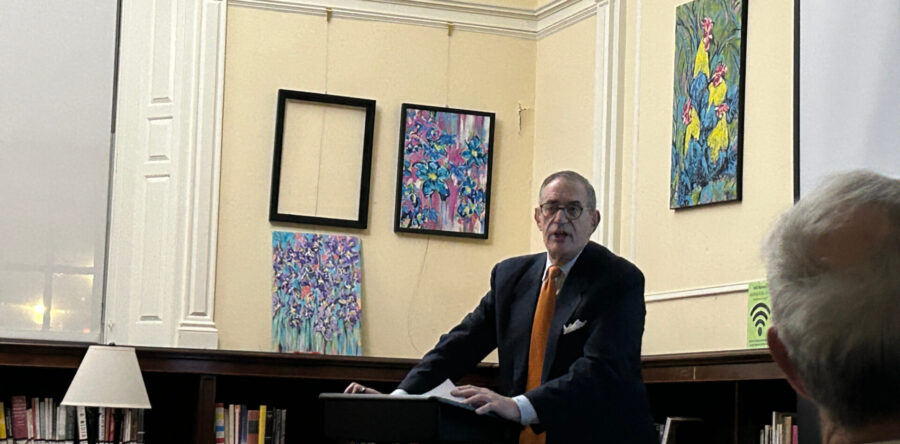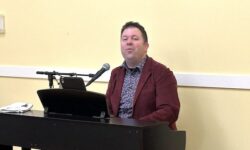By Julia Beauregard
Hometown Weekly Editor
The Medfield Public Library (MPL) and the Medfield Historical Society co-sponsored a Halloween inspired talk regarding The Salem Witch Trials at the end of last month. Retired Massachusetts Superior Court Justice Dennis J Curran returned to the MPL to lead this fascinating discussion.
This discussion, while centered around the Salem Witch Trials which occurred in the late 17th century, worked to debunk the five major myths surrounding the outbreak of witchcraft accusations in colonial America, as well as uncover the causes behind the widespread mass hysteria.
The five most common myths related to the witch trials include: victims were burned, all victims were women, the accusations were caused due to superstition, all victims were from Salem, and that these people who were accused were suffering from ergot fungus poisoning. Justice Curran shared with the attendees that victims were in fact hanged, there were multiple male victims who were accused and even executed, and that the accusations were really caused due to religious piety. He went on to share that, “it [the accusations of witchcraft] all began in Danvers, not Salem… the most severely affected town was Andover,” one in ten people were accused there. Curran stated that the main contribution to the trials that Salem was responsible for was that the trials were held in the town of Salem. 24 different towns were involved in the trials.
He went on to disprove the ergot poisoning theory by claiming that this theorization was caused by modern people’s desire to medicalize the past, as it gives an explanation for outlandish behavior. This was a major point of discussion. Justice Curran feels as though the underlying issues here were social, not medical.
During the trials, 29 people were convicted, 19 people executed, one was tormented to death and two died waiting for trial. He shared that one of the villains of this trial was William Stoughton, who was a witch hunter that tormented people to receive confessions and allotted gossip and stories to count as evidence. The Justice shared that he felt as though so many people were convicted due to the low burden of proof that was accepted during this time period. In a legal context, the burden of proof is simply the duty of a party to prove a disputed claim and during the 17th century, the burden of proof percentage was approximately 25% lower than it is now. The trials went on until the burden of proof percentage increased after the government disbanded the court where the trials were being held. Most accused were found not guilty after the rules had changed.
Bri Ozanne, the adult services librarian shared, “this is the third time we’ve hosted him. He has given incredible talks with his fascinating judicial perspective,” and this talk was no exception. Attendees were able to learn about the Salem Witch Trials from a unique perspective.
Justice Curran closed out this discussion by sharing what he thought had happened during this time; he felt as though these trials were due to the frail nature of the human condition. Colonists lived a life of fear, there were rivalries amongst families due to property disputes, there were dark and unexplored human emotions, the puritans lived a desolate and isolated existence, women’s suffrage was a topic that was gaining more traction at this time, men believed in the inherent wickedness of women because they did not understand the nature of women, and witch hunting asserted male authority. This fascinating discussion drew a full house to the MPL.









